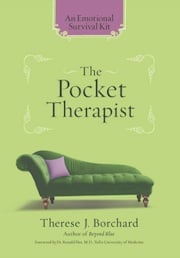 In his book, “How to Break Your Addiction to a Person,” Howard Halpern first explains what an addictive relationship is, then gives guidelines for recognizing if you’re involved in one. Then, he offers several techniques on how to end an unhealthy relationship (or an emotional affair).
In his book, “How to Break Your Addiction to a Person,” Howard Halpern first explains what an addictive relationship is, then gives guidelines for recognizing if you’re involved in one. Then, he offers several techniques on how to end an unhealthy relationship (or an emotional affair).
I’ve compiled and adapted all of his suggestions into the following dozen techniques, excerpting what I found to be the most important passages for each.
1. Keep a Relationship Log
Keep track of the events and happenings of the relationship, but above all, and in as honest detail as you can, set down your feelings about the contacts with your partner. The reasons this can be extraordinarily helpful are (a) It compels you to notice what is going on and how you feel about it, (b) It can help you to look back through it and see the shape of the relationship, what it has really been like and felt like, what have been its patterns over time, and (c) It can curb your tendencies to distort the relationship by either twisting events, repainting your feeling and forgetting either the unpleasant or the pleasant.
2. Find the Patterns
It can be eye-opening to see if there is a pattern in the people you have tended to get involved with and the types of relationships you have formed, so unless your current partner is the only love relationship you have had, I suggest you do a Relationship Review. First, list the names of each person with whom you had a romantic attachment, going as far back as you can. Then set down the Physical Attributes of each–his or her height, build, hair color, movement, voice, general attractiveness, etc. Then write down the Personality Characteristics of each person on your list. What do you feel is the most striking feature of his personality? What adjectives best describe him: Introverted or extroverted? Passive or active? Warm or cold? Intimate or distant? Self-confident or self-effacing? Successful or ineffectual? Hearty or frail?
Even more important than similarities in the physical and personality characteristics of people with whom you have had close relationships are the Relationship Characteristics, the repeated patterns of interaction in which you have been involved. To get some idea if your relationships have had repeated patterns, it can be useful, under the name of each person with whom you have had a relationship, to write the answers to questions such as these:
a) Exactly how did the relationship start? Who was the initiator? The pursuer?
b) Was one of you more dominant? Who seemed to control when and where you would get together, and how you would spend your time?
c) What was the emotional tone of the relationship for you? Loving? Angry? Contented? Depressed? Anxious? Boring? Insecure? Romantic? Desperate? Or what?
d) Emotionally, did you get your needs satisfied?
e) How did your relationship end? Who ended it? Why? What were the feelings of each of you about its ending?
3. Write Memos to Yourself
A patient of mine invented the technique of writings memos to herself. She would write memos, mail them to herself, take them out of her mailbox when she got home the following night, and find such things as: “Hi! Welcome home. Make yourself that curried chicken, and put on some good music. You are worth making a fuss over. After, get to that stack of letters and bills you’ve been putting off.” Or, “Call Carolyn and/or Mabel tonight and make some plans for the weekend. Then enjoy the rest of the evening by doing whatever you want to do that would be fun and pleasurable.” Or, “Tonight will be exactly two weeks since you last saw Wayne. If I know you, you’ll get particularly sad and sentimental over the anniversary and may even be tempted to call him. You’ll begin to forget why you ended it. So remember how impossibly stingy he was and berated you viciously or being extravagant whenever you bought something a little luxurious, even though it was with your own money! And how stupidly meticulous he could be. And how ungenerous he was with his feelings. It’s the two-week anniversary of being free of all that.”
4. Make Connections.
To free yourself from the tyranny of your Attachment Hunger [the degree to which your needs were satisfied as an infant], it can be helpful to see clearly the connection between the infant or child you once were and the feelings you are experiencing now.
It would be enormously helpful for you to connect up with the infant and child memory tapes within you. Write down each negative feeling that is triggered by anticipating or acting to break a bad relationship, whether it is your terror of aloneness and abandonment , overwhelming neediness, longing, inadequacy, insecurity, guilt, or whatever. Then, for each, think about and write down whatever you can remember of the earliest times you felt like that. What was going on? Why did you feel that way? What in the present situation seems similar enough to be triggering these old feelings? Is it really a valid and appropriate way for you to be reacting now? Feel the connections, be compassionate, empathic, and supportive to the little child you once were–he had reason to feel the way he did. But you will probably discover that you, as an adult, do not have good reason to feel now as you did then. And that can be very liberating.
5. Foster a Supportive Network
At a time when you are breaking a connection which has given you sustenance, friends can serve as an auxiliary life-support system. The value of this network is so great that having it or not having it should not be left to chance. It can make the crucial difference in your success in ending the relationship. It has many specific and even specialized uses, but overriding all else is that when you are terrified of being all alone in the universe, it can give you the comforting assurance that there are other caring people out there. And this assurance, by making you feel reconnected to the web of life, can firm up your determination to make and sustain the break.
6. Complete Your Sentences
Below are some incomplete sentences that, if you finish them spontaneously and frankly, will put you in touch with basic aspects of your Self. You can st down one or more completions for each sentence.
I am…
The main thing about me is…
I always…
I feel most like me when…
What I like most about a person is…
I will be…
I get angry when…
I feel happiest when…
I believe in…
One thing I want to accomplish is…
What I like most about myself is…
I hate it when…
I was…
I feel least like me when…
I feel weakest when…
7. Be Aware of Your Body
Your Self is not a disembodied entity. How you feel about who you are is related in many ways to your sense of size, the shape, and the functioning of your body. Any exercises that help you become aware of your own body–what it looks like, feels like, how it operates, its impact on its surroundings, and the world’s impact on it–can enhance your feelings that there is a central core that is unmistakably your own and is part of your unique identity. If you are a person who engages in sports or other active pursuits, it is a matter of tuning in to your body in action and seeing it as a manifestation and reflection of who you are. But whether you are active or sedentary, the most basic physiological process that you can easily become aware of is your breathing. If you ten to lose touch with who you are when you are not connected to someone else, it can be helpful to spend some time each day doing deep breathing.
8. Nurture Your Core Fantasies
Create your own way of seeing, hearing, exploring, and being in touch with your own unique center. Some people I know have drawn pictures of it, sculpted it, and written about it. The method is less important than the message it brings. That message is that you do have an identity that is real, complete, and yours alone. You may have feelings to the contrary–that your identity is weak or cloudlike or fragmented–but these feelings distort the fact that you are a solid and whole person.
Your identity does not depend on being connected to another person. In fact, being connected in an addictive way to another person, though giving you the illusion of identity, is a sure way to further weaken your sense of who you, as a separate being, really are.
9. Awareness of Wanting
If your sense of self is shaky in a way that is reflected in not knowing what you want, I would like to suggest a little exercise taken from one that the psychoanalyst and group leader Ruth Cohn (formerly of New York, now in Switzerland) prescribed for some of her patients. Take ten minutes of each day in which you can arrange to be undisturbed and simply give yourself the task: In these ten minutes I will focus entirely on what I want at this given moment, what my body wants to do, what my thoughts want to do, and to as great an extent as possible, I will do what I want.
10. Stop Thoughts and Distract Yourself
Eileen told me, “I found a way to think of Peter a lot less often. I wear this rubber band around my wrist, and as soon as I notice thoughts of Peter intruding my mind, I pull the rubber band out and let it snap against my wrist hard. It really works!”
At first I was appalled at this effort to condition herself not to think about Peter through punishment. . . . But then I realized that Eileen had developed a very deep understanding of the needs, patterns, and history that went into forming her attachment to Peter and other similar men before him, and that she had strengthened her sense of her worth and viability as a separate person. In that context, her behavioral gimmick was not a substitute for real change but a useful technique in dealing with the residue of her attachment–the intruding thoughts about Peter. I could see that it had great value in severing the last vestigial ties to him. And I could see the appropriateness of recommending some behavioral techniques as part of the process of breaking an addiction.
11. Allow Multiple Attachments
If we have multiple sources of gratification of our needs for love, nurturance, and stimulation, we will be more secure, independent, and free to be ourselves. This does not mean that all our attachments will have equal meaning. It is not only possible but highly desirable to be deeply devoted to your primary partner and still have much of your need for connectedness met by friends, close kin, colleagues, co-workers, and others.
12. Connect with the Timeless
There is another source of connectedness that does not involve specific other people and that has some advantages that attachments to people do not. The Gershwin song expresses the romantic wish that through “the Rockies may tumble, Gibraltar may crumble, they’re only made of clay, but–Our love is here to stay.” Well, the Rockies and Gibraltar are still around while countless people who earnestly sang these lyrics to their partner are not. Or their partner is not. Or both, through separation or death, are gone.
I am not proposing that it is better to love rocks than people. But I am implying two other propositions: 1) that it is unrealistic not to recognize the possibility of any relationship being transient and ephemeral, and 2) that the more we can root some of our attachment needs in things more lasting and even timeless, the firmer is the ground on which we stand in life’s changes and discontinuities.
* Click here to subscribe to Beyond Blue and click here to follow Therese on Twitter and click here to join Group Beyond Blue, a depression support group. Now stop clicking.

